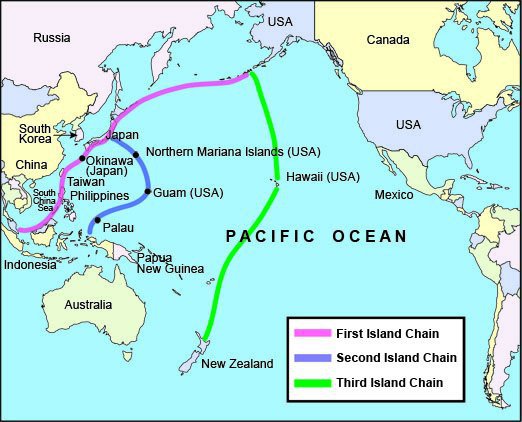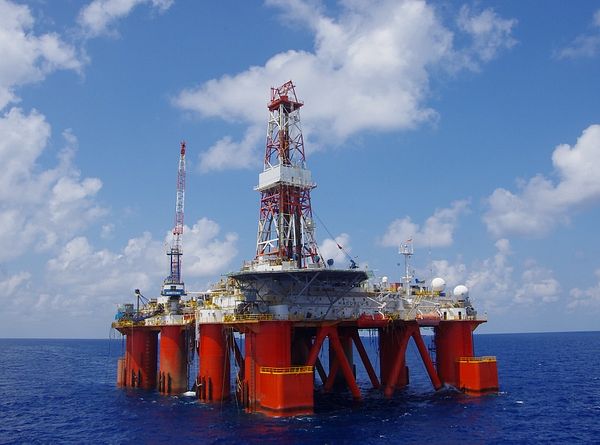Much attention has been directed at Joe Biden’s mental lapses and physical frailty. Less attention has been spent on Donald Trump’s cognitive difficulties and physical limitations, with most focus being devoted to his insults and exaggerated claims (as if they were not indicative of his mental state). Biden is 82 and Trump is 77, so one would expect that the passage of time has taken some toll on them, both physically and cognitively. It would seem that the difference, as Mickey Savage of The Standard phrased it, is that Biden is well-intentioned but hapless, whereas Trump is evil and dangerous.
I agree with the characterisation of Trump but not that of Biden, who I believe has far more mental acuity than the orange toned weasel. People forget that Biden has a life-long stutter, which from time to time shows up in his speech. And yes, he occasionally forgets or confuses a name or date, but then again so does the malignant narcissist serial liar. Biden rides bicycles and exercises regularly at the White House and home gyms. Trump rides a golf cart from tee to wherever his ball lands, off the designated paths and onto fairways and greens. He is not exactly a fine physical specimen, despite his corrupt doctor’s claims to the contrary.
Be that as it may, the mental and physical fitness of either of these men is not what matters when to comes to their suitability for office. Instead, as a starter, it is their temperament that matters. Biden is measured, calculated and calibrated in his actions, even if prone to the occasional profanity (as befits a guy from a blue collar background). Trump is impulsive, vindictive and petulant. Biden has 50 years of public service as his background, including terms as a US Congressman and Senator, Vice President and now POTUS. Trump first ran for office in 2016, and that was for the presidency that he won. We know what happened next, which should serve as a warning of things to come–and worse–should he get back into office. In any case it should be clear to impartial observers that Biden is the better qualified candidate in this year’s presidential election, above and beyond the elderly foibles of he and his rival.
Temperment and public service experience are not just what differentiates the two likely presidential candidates. The biggest difference is in the teams that surround them. The importance of the governmental team was driven home to me by a colleague at a Brazilian research institute in the late 1980s after George H. W. Bush succeeded Ronald Reagan as president. I was lamenting the fact that a Vice President who claimed to have seen or heard nothing about Iran-Contra and other Reagan administration scandals had won the presidential election of 1988, and my colleague said to me “but that is why, unlike here in Brazil where we struggle to find someone who can lead us out of darkness and into the modern world, in the US you can have a monkey as president and the machine will still keep on running without missing a beat.”
By “the machine” he was presumably referring to the US economy and institutional architecture, including the government of the day. It was more than one person and although the presidency is a vital cog in the machine, it is not the only one. Trump stretched the limits of institutional resiliency, to be sure, but it bent without breaking and Trump was thwarted in many of his most inane or perilous initiatives by a mixture of constitutional features (separation of powers, state’s rights, government regulations and civil service protections) and the interventions of cooler heads in his administration (the so-called “adults in the room” who acted as guardrails against his more thoughtless, spiteful or ignorant impulses). All along, in spite of the incompetent, incoherent partisan and polarised response to the Covid pandemic, the machinery of the US rolled on with that combed-over monkey at the wheel.
That is the important thing to consider. Biden has assembled a first class team that has steered the US out of the economic doldrums and into a period of sustained growth. He has expanded Obamacare, bringing in millions of people into affordable health insurance schemes, has capped the price of essential prescription drugs, and has funded a slew of infrastructure projects that have brought employment and modernisation to many localities, including in red (MAGA) states. In fact, US employment is at 50 year lows, and wages have started to catch up to inflation. He has passed student debt relief bills and increased social security benefits for the first time in 35 years. To be sure, there are challenges ahead, including getting some measure of control over the Southern border (which has just seen an all-time record of undocumented migrants, creating friction with the reactionary state government in Texas and fuelling Trump’s xenophobic and racist attacks on recent arrivals), and stabilising energy prices (which if low by international standards are an economic benchmark in the US). But by most objective standards, including its international image in spite of its ill-considered support for Israel in its war on Palestinians, the US is generally better off under Biden than his predecessor. Just ask NATO and the EU as well as US Asian allies (on this and. the broader context of US decline, see https://www.nytimes.com/2024/02/14/opinion/republicans-isolationsim-ukraine-russia-congress.html).
Biden’s team has a coherent programmatic agenda that addresses the damage done by Trump’s reckless and self-serving policies but also more longer term and not exclusively partisan goals when it comes to the US domestic and international position. The US has a malaise, and they want to remedy it. Trump’s team, on the other hand, are all about paybacks for grievances caused by an assortment of non-supplicants, and even then they are divided about who to punish first. The Trump team is incompetent and incoherent at its core because everything depends on the day to day whims of the would be czar.
Biden does not sweat the details of his administration’s initiatives. He leaves that to his cabinet and senior managers who have expertise in the areas covered by their portfolios. These are technocrats and political operators who know the ins and outs of the federal bureaucracy and Congress and therefore know how things work. Even with a divided and dysfunctional GOP majority in the House, they have gotten things done. In other words, if passing legislation and implementing policy is like making sausage (and old aphorism of US politics), then Biden’s team knows how to do so, the institutional way.
In contrast, Trump has vowed to come back into office with a revenge agenda against his opponents. He has announced that we will use the Justice Department as his instrument of retribution. He and his aides have drawn up a list of 400-500 loyalists who will take control of the apex agencies in the federal bureaucracy and who will re-write civil service legislation in order to engage in whole-scale purges of the “Deep State” apparatus. He aims to kill off entire departments (ministries, In NZ terms), especially those that cater to “woke” sentiments such as the Department of Education, Health and Human Services, the Civil Rights Commission, etc. One only has to look at the writing of Stephen Miller, one of Trump’s leading political advisors who was responsible for his border policy that included family separations and incarceration without charge upon arrival and detention (in spite of many migrants claiming refugee status from violence prone societies like El Salvador, Colombia or Honduras, to say nothing of left authoritarian regimes like those in Venezuela and Nicaragua) to understand the extent of Trump’s dark plans for his next term. His loyalists will swear allegiance to him before the constitution, and his judicial appointments will confirm his authority to undertake the overhaul of the federal government. His Vice President will be a brown-nosing lap dog, and his cabinet will be a collection of misfits and misers keeping what is left of the public trough to themselves and their private sector cronies. There will be no “adults in the room” and institutional counters to put up guardrails around him, and he will introduce fickle criteria to his micromanaging of pet policy projects. The US reputation will resume its nosedive.
And then of course there are the sycophantic opportunists and grifters who always travel in his political circles and who see his return to power as a means to advancing their personal ideological and material agendas.
I will leave aside for the moment the impact these two very different teams will have on things like US-PRC relations, the Ruso-Ukranian War, the Middle East meltdown, rise of techno-sovereignty challenge to the Nation-State, climate change mitigation, and more policy areas ad infinitum. The differentiation line is stark not because of which monkey is driving the machine, but because of who else is along for the ride as navigators and mechanics.
That is why the focus on Biden and Trump’s age and mental acuity is more of a side-show than a critical issue. Temperment is more important, especially when one guy has senior moments of forgetfulness or confusion and the other is an incoherent raving lunatic. Most important of all are the teams that will surround them, and on that score I think that the difference is clear.
Razor sharp clear.


